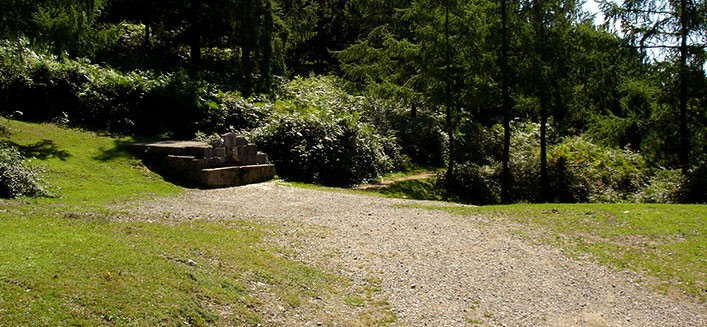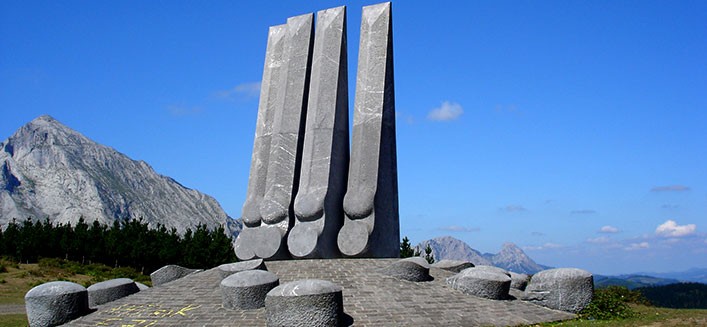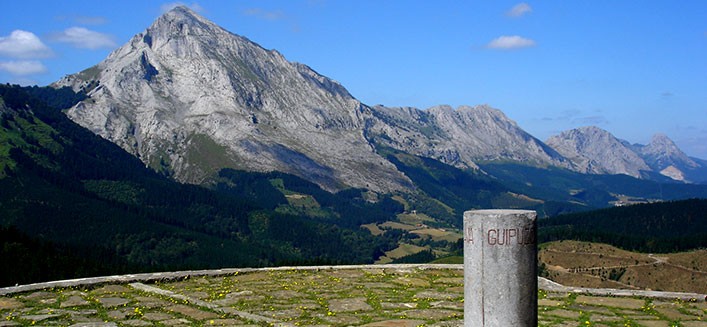This route joins Udala and Besaide along two different routes giving importance to the holm oak forest in the foothills of Mount Udalatx.
The route starts at the upper part of the path that goes to the centre of the hamlet. From here you can see the church of San Esteban.
Before arriving at the junction, you can see the washing trough of Iñustei. At this junction you go uphill along the old “Uphill route”. After a couple of bends in the road, on the right you will find the natural spring of Nevera.
Gradually you continue upwards until you come to a junction. From here, if you bear right you come to the spring. The route continues straight on.
- Gazeaga Kilns: After passing through a holm-oak wood you come to a pine grove where you can find the kilns of Gazeaga.
- Arteta hut: After passing the hut, the dirt pathway becomes stony.
- Besaide: After a small descent, you come to a wide pathway. From here you can take the path to Elorrio or Kanpazar, but for our route you take the path to Besaide spring. From here, if you want, you can continue uphill to the uplands of Besaide. Passing Besaide spring you take the path and continue along the “Downhill route” that passes through pine trees. After a few ascents and descents near Iñustei the lower path joins the upper path taking you to the vicinity of the church of San Esteban.
- Udala Hamlet: In the foothills of Mount Udalatx you can find the church of San Esteban. The roof was made by the master stonemason Juan Bautista of Salturri in 1609 and the main altar by Antonio Antia and Manuel Olaran in 1763. The portico is Romanesque and the festivals are celebrated at the beginning of August.
- Nevera Fountain: Below the road that leads to Txukurrillo farmhouse you can find the good-tasting waters from this fountain.
- The cooler: It is a circular shaped hole with a hollow floor and sandstone and limestone sides. The hole is about 500 years old. Ice cream and sorbets were made with the ice that it produced. It has also been used to refresh drinks and to cure people infected by diseases such as meningitis.
- Gazeaga Kilns: There are three kilns and one hut in ruins. The kilns surround the oven that whitewashed the limestone and are situated in protected corners along route. Work was done in the months of April and August, after planting wheat and collecting the harvest.
- Bell tower of Besaide: This is the point where Alava, Biscay and Guipuzcoa meet. The monument was built in honour of deceased mountaineers. The feast day is celebrated the third Sunday in September, in memory of mountaineers who may have died that year.
- Besaide Fountain: It is a wonderful fountain that provides rich fresh water. There is a place to sit and the surrounding trees offer welcome shade.





